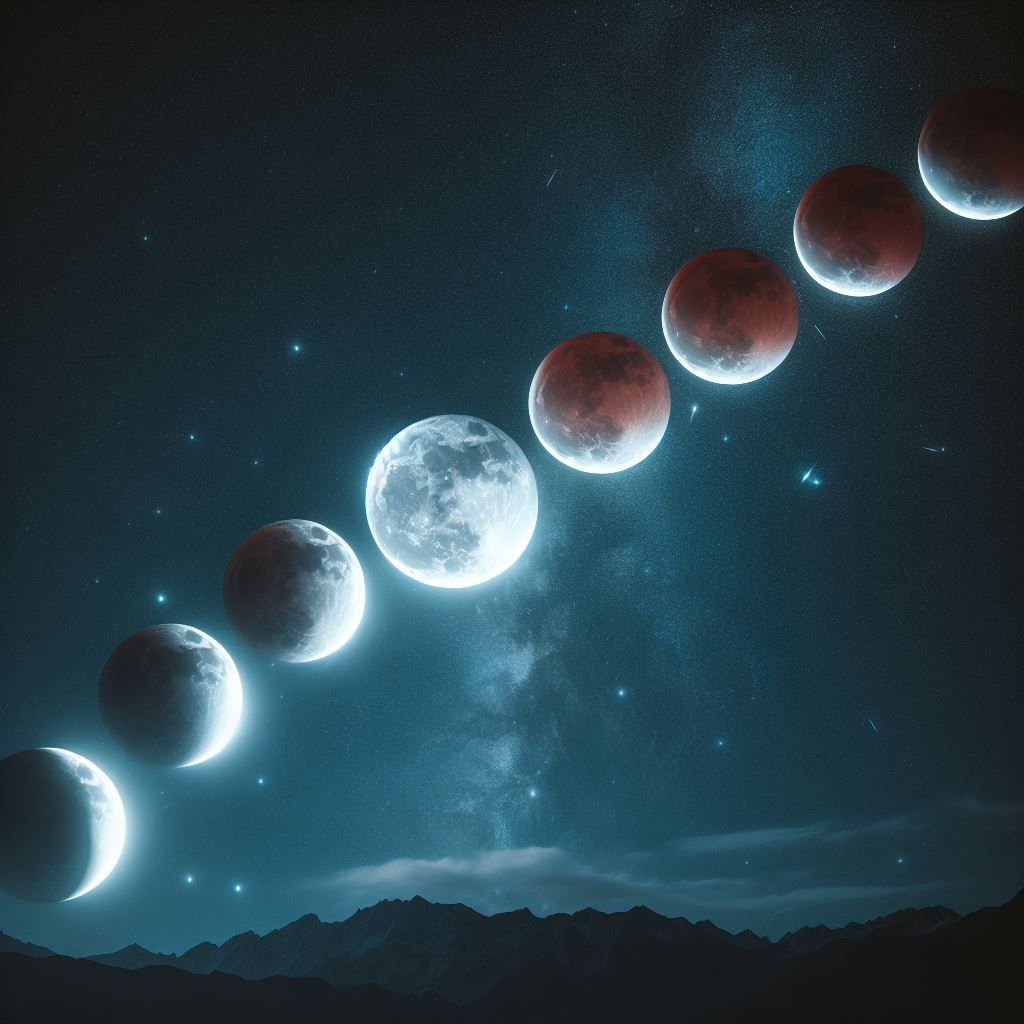Full Hunter's Moon Lunar Eclipse: What to Expect on October 28, 2023

Mark your calendars for October 28, 2023, as it will be a perfect opportunity to witness a spectacular lunar eclipse if you are a space enthusiast. During this period, the Earth's shadow will be cast on the full moon's surface, also known as the Hunter's Moon, resulting in a partial lunar eclipse. This article aims to provide you with all the details you need to know about this astronomical event.
What is a partial lunar eclipse?
An eclipse of the moon happens as the moon moves through the Earth's shadow, which has two distinct layers: the innermost layer, known as the umbra, is much darker, while the outermost layer, known as the penumbra, is much lighter. It is possible to have a total, partial, or penumbral lunar eclipse, depending on how much of the moon is covered by the Earth's shadow during the event.
A lunar eclipse that is only partial occurs when just a segment of the moon is in the umbra at the same time while the rest of the moon stays in the penumbra. It contrasts the darkened and brightened areas of the moon's surface.
When and where to see it?
On October 28, 2023, a partial lunar eclipse will be visible from Europe, Asia, Australia, Africa, North America, South America, and some regions of the Pacific Ocean, Atlantic Ocean, Indian Ocean, Arctic, and Antarctica. The partial lunar eclipse will last approximately one hour. The actual start and end times of the eclipse, as well as its total duration, will be different depending on where you are located; nevertheless, the following are some basic guidelines:
- The eclipse's penumbral phase will start at 18:01 UTC (14:01 EDT) when the moon moves into the Earth's penumbra.
- The moon will enter the Earth's umbra at 19:35 UTC (15:35 EDT), marking the beginning of the partial phase.
- The maximum eclipse will happen at 20:14 UTC (16:14 EDT), when the Earth's umbra will cover 6% of the moon's surface.
- The partial phase will end after the moon exits Earth's umbra at 20:52 UTC (16:52 EDT).
- At 22:26 UTC (18:26 EDT), the eclipse will end when the moon emerges from Earth's penumbra.
The eclipse lasts 4 hours and 25 minutes, and its partial phase lasts 1 hour and 17 minutes.
What is the Hunter's Moon?
The full moon in October has historically been called the Hunter's Moon. It is because this was the time of year when hunters would stock up on meat for the following winter. More names for the Hunter's Moon include the Blood Moon, Sanguine Moon, and Travel Moon.
The Harvest Moon is the name given to the full moon that occurs the closest to the fall equinox. The Hunter's Moon is the name given to the first full moon after the Harvest Moon. Nevertheless, there are years, such as 2023, when the Harvest Moon occurs in October rather than September. This results in the Hunter's Moon occurring in November.

The Hunter's Moon of 2023 will be unique because it will coincide with a partial lunar eclipse, making it appear darker and redder than usual.
How to watch it?
You will need a cloudless sky and an unobstructed view of the eastern horizon to observe the partial lunar eclipse that will take place on October 28, 2023. Investing in a pair of binoculars or a telescope is an excellent idea to get the most out of the eclipse. However, this is not a necessity.
The most fascinating time to observe the eclipse is during its most significant phase. It is because it offers a stark contrast between the parts of the moon that are eclipsed and those that aren't. Additionally, you may notice slight colour variations on the moon's surface, particularly in regions that look rusty or orange. It is due to sunlight being refracted after passing through Earth's atmosphere.
You may also view the eclipse online through various live-streaming services, such as the one provided by Space.com. These live feeds will provide comments and insights from specialists regarding the event.
What makes this eclipse so significant?
Eclipses of the moon are fascinating to observe and provide essential data for scientific research. These features allow astronomers to investigate the moon's surface characteristics, such as craters and mountains, and the moon's atmosphere and temperature. They also help us understand the behaviour of the Earth's shadow and how it interacts with other heavenly bodies.
There is a vital cultural and spiritual significance associated with lunar eclipses for a significant number of people throughout the world. Myths, tales, rituals, and prophecies are frequently connected to them for various reasons. There is a school of thought that lunar eclipses are warnings of impending change, transformation, or completion. They are symbolic and can catalyze significant events in individual lives or even global affairs.
Whether you are interested in the eclipse for its scientific or personal significance, you will see a rare and spectacular phenomenon that connects us with the Earth we live on and the other inhabitants of the universe.



